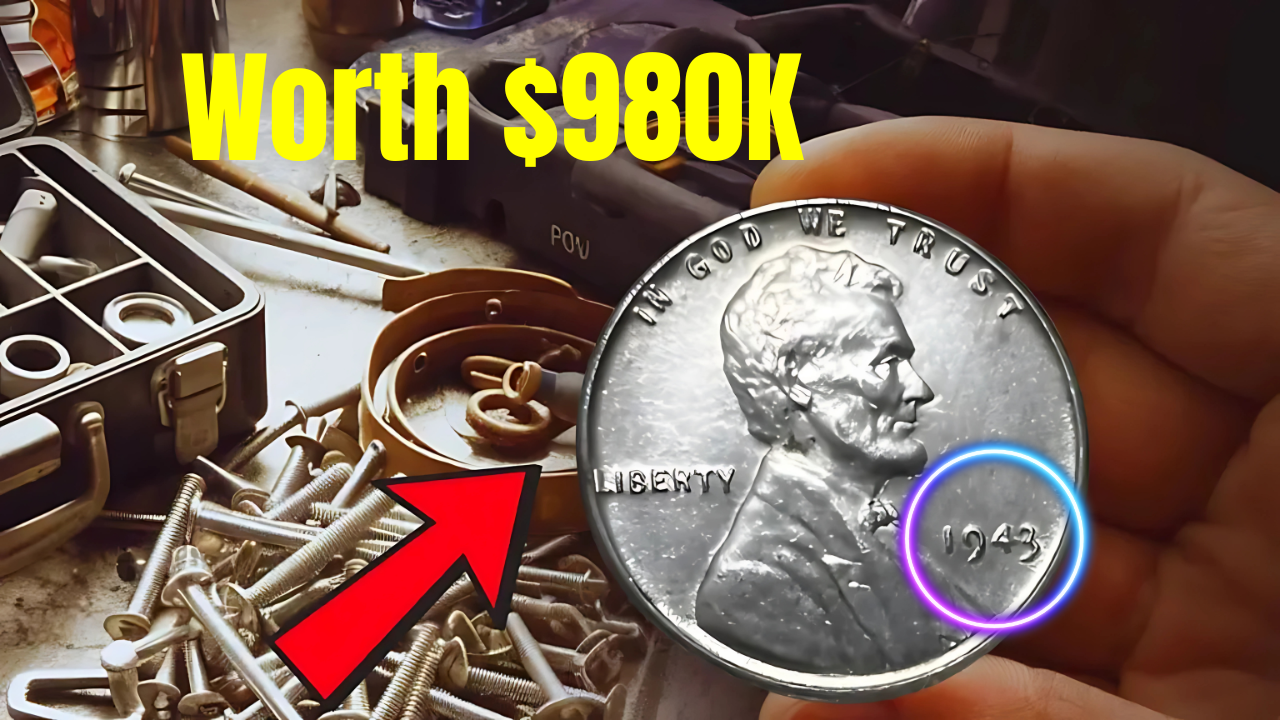In the world of coin collecting, few stories are as captivating as that of the Lincoln Wheat Penny valued at $980,000. This penny, often hidden in old letters, jars, or family heirlooms, has sparked a modern-day treasure hunt among collectors and casual enthusiasts alike. The allure lies not only in its extraordinary value but also in the rich tapestry of American history and chance that surrounds it.
The Lincoln Wheat Penny: An American Icon
A Revolutionary Coin
The Lincoln Wheat Penny debuted in 1909 to honor Abraham Lincoln’s centennial, marking the first time a real person appeared on U.S. currency. Designed by Victor David Brenner, the obverse features Lincoln’s profile, while the reverse showcases two wheat stalks symbolizing prosperity and democracy. This design ran until 1958, embedding itself into American culture and commerce.
Wartime Changes and Accidental Treasures
World War II and the Steel Penny
During World War II, copper was critical for military use, leading the U.S. Mint to switch to zinc-coated steel for penny production in 1943 However, a few copper planchets accidentally remained in the presses, resulting in a handful of copper pennies being struck that year—a mistake that created one of the rarest and most valuable coins in American history.
The $980,000 Penny
Experts estimate only 15-20 authentic 1943 copper pennies exist, each potentially worth up to $980,000 depending on condition and provenance. The blend of historical significance, rarity, and the story behind their creation makes these coins legendary among collectors.
Valuation Factors and Rarity Analysis
Key Wheat Penny Varieties and Their Values
| Coin Variety | Estimated Population | Condition Range | Value Range | Key Characteristics |
|---|---|---|---|---|
| 1943 Copper Penny | 15-20 known | Good to MS-64 | $100K-$700K | Wrong metal composition |
| 1909-S VDB | 484,000 minted | VG to MS-65 | $500-$50K | Designer initials included |
| 1914-D | 1,193,000 minted | Good to MS-63 | $200-$25K | Key date Denver mint |
| 1922 No D | ~500 known | VF to MS-62 | $1K-$15K | Missing mint mark |
| 1955 Doubled Die | ~24,000 known | VF to MS-64 | $1K-$10K | Visible doubling error |
Authentication and Professional Verification
Why Authentication Matters
With such high values at stake, authentication is crucial. Professional grading services like PCGS or NGC use advanced techniques—weight measurement, metal analysis, and microscopic inspection—to distinguish genuine coins from counterfeits. Many fakes are created by copper-plating steel pennies or altering dates, so never rely on appearance alone.
Identification Techniques for Treasure Hunters
| Test Method | Equipment Needed | What to Look For | Reliability Level |
|---|---|---|---|
| Visual Inspection | Magnifying glass | Date, mint mark, color | Basic screening |
| Magnet Test | Strong magnet | Magnetic attraction (steel only) | High for steel detection |
| Weight Test | Digital scale | 3.11g (copper) vs 2.7g (steel) | Very high accuracy |
| Color Assessment | Good lighting | Copper vs steel appearance | Moderate reliability |
| Professional Grading | Grading service | Complete authentication | Definitive verification |
Where to Find Rare Wheat Pennies
Prime Discovery Locations
-
Estate Sales & Inherited Collections: Many families unknowingly possess valuable coins in old collections or jars.
-
Penny Jars & Heirlooms: Forgotten containers in attics or basements can yield surprises.
-
Bank Rolls & Coin Machines: Millions of pennies circulate daily, offering opportunities for discovery.
Preservation and Handling Tips
-
Handle coins only by the edges to avoid damage from oils and acids.
-
Store coins in protective holders designed for numismatic preservation.
-
Avoid cleaning coins, as improper cleaning can irreparably damage valuable specimens.
-
Use climate-controlled storage and acid-free materials for long-term protection.
Market Dynamics and Investment Potential
Why Rare Pennies Appreciate
The rare coin market has shown strong appreciation, with exceptional coins often outperforming traditional investments. Factors influencing value include economic conditions, collector demand, and new discoveries. Diversification and patience are key for collectors looking to build valuable portfolios.
Historical and Cultural Significance
The $700,000 penny is more than a collector’s item—it represents American resilience, industrial history, and the quirks of chance that create legends. Stories of these coins inspire curiosity about history and economics, and social media has amplified interest in treasure hunting.
As the population of rare pennies remains fixed and interest grows, values are likely to continue rising. Advances in authentication and generational wealth transfer will keep the market dynamic, while international interest further supports price stability.
Wheat Penny Authentication & Value Guide
| Year/Type | Estimated Value | Key Characteristics | Approximate Number Known |
|---|---|---|---|
| 1943 Copper | $100K–$700K | Bronze color, non-magnetic | 15–20 |
| 1943 Steel | $0.20–$20 | Silver color, magnetic | 1+ billion |
| 1909-S VDB | $500–$50K | S mintmark, VDB initials | 484,000 |
| 1914-D | $200–$25K | D mintmark, low mintage | 1,193,000 |
| 1922 No D | $1K–$15K | No Denver mint mark | ~500 |
| 1955 Doubled Die | $1K–$10K | Visible doubling on obverse | ~24,000 |
FAQs
How can I tell if my 1943 penny is the valuable copper version?
Check for a traditional copper color, a weight of about 3.11 grams, and non-magnetic properties. Always seek professional authentication.
What should I do if I think I found a valuable penny?
Handle it by the edges, store it safely, and contact a reputable grading service for authentication.
Are there other valuable Lincoln Wheat Pennies?
Yes, varieties like the 1909-S VDB, 1914-D, and 1955 doubled die can also be worth thousands, depending on condition.
Also Read:- 10 Rare Pennies That Could Be Worth Millions – Check Your Change Now

